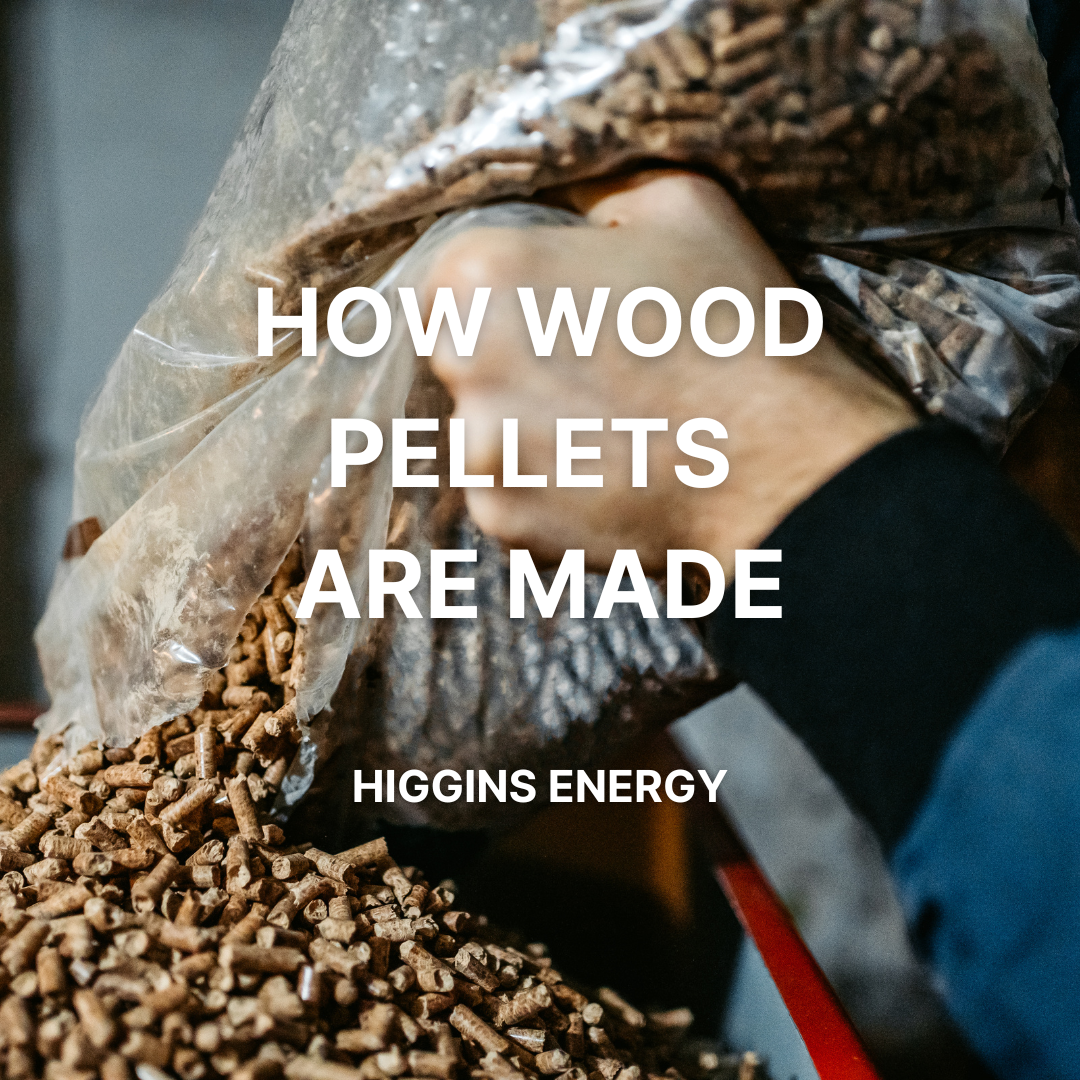
As energy costs rise and environmental concerns grow, more homeowners are turning to renewable energy sources for heating. One increasingly popular option? Wood pellets. Compact, efficient, and eco-friendly, wood pellets are a top-tier choice for anyone looking to stay warm while minimizing their environmental footprint. But have you ever wondered how these little heating powerhouses are made—and why they’re such a great alternative? Let’s break it down.
What Are Wood Pellets?
Wood pellets are small, cylindrical pieces of compressed wood—usually made from sawdust, wood chips, and other byproducts from the lumber industry. They’re uniform in size, dry, and extremely dense, which makes them ideal for high-efficiency heating in pellet stoves and furnaces.
How Are Wood Pellets Made?
The production of wood pellets involves a few key steps, all designed to maximize their energy potential:

Raw Materials
The materials that make up a compressed wood pellet begin with the gathering of wood waste and scraps – think sawdust, wood chips, shavings, lumber mill scraps and large pieces of wood or trees unsuitable for lumber. This raw material is typically a byproduct that would otherwise go unused.

Broken Down
Raw material is broken down into consistent, small pieces using chipping machines or hammer mills. This will ensure that the moisture content, heat value, and ash content are consistent in the pellet.

Drying
Once the raw material is broken into smaller pieces, it must be dried to a consistent moisture level to ensure the pellets burn efficiently. The raw material is sent through a large dryer drum and heated to dry out excess moisture, resulting in a consistent low moisture level, typically around 10%. This allows for a cleaner and more efficient burn.

Compression
The dried material is ground down into a fine powder using industrial grinders, then transferred into a pellet die which compresses the material together with high pressure. This causes the wood materials to heat up and release natural lignins that bind the materials together into a single pellet.

Cooled and Hardened
Once the pellets are heated up and compressed into a single piece, they are hardened during the cooling process in cooling towers and stored in silos before bagging.

Bagged and Shipped
Pellets are typically bagged into 40-lb. plastic bags and stacked 50 bags into a pallet or skid, equaling around one ton (2,000 lbs.) of pellets. They are then wrapped and shipped to distributors.
Why Are Wood Pellets a Great Heating Option?
There are several reasons why homeowners are choosing wood pellets for their heating needs:
- Renewable and Sustainable: Because they’re made from wood waste, pellets reduce landfill use and encourage sustainable forestry practices.
- Cost-Effective: Pellets often cost less per BTU than oil, propane, or electricity, especially in colder climates.
- Efficient and Clean Burning: Pellet stoves are designed for optimal efficiency. They produce very little ash or smoke, and modern models can be controlled with a thermostat for consistent comfort.
- Easy to Store and Handle: Wood pellets come in convenient bags, making them easy to transport, stack, and store.
- Local Energy Source: Many pellets are produced regionally, supporting local economies and reducing the environmental impact of long-distance transportation.
A Warm Choice for the Eco-Conscious Home
From collection to compression to your pellet stove, the life cycle of a wood pellet creates little air pollution and carbon emissions, making pellet heat an eco-friendlier alternative to non-renewable fossil fuels, such as oil, coal, or gas.
Using raw, leftover materials from natural, sustainable sources for heat reduces carbon emissions caused by oil drilling or mining, and reduces wood waste. Rather than remaining as raw material, compressed wood pellets burn more efficiently due to their size and consistency and produce a higher heat value with little air pollution or creosote. In addition, wood pellets are made from carbon-neutral sources without any additives or adhesives, which affects their emissions when being burned.
Whether you’re looking to save money, reduce your carbon footprint, or just stay cozy all winter long, heating with wood pellets is a smart, sustainable solution. Plus, with innovations in stove design and fuel production, it’s easier than ever to make the switch.
So next time you’re basking in the gentle warmth of your pellet stove, you’ll know exactly how those little pellets came to be – and why they’re heating homes with such heart.
At Higgins, we offer many pellet types and brands available in a range of prices, plus available delivery services, so your pellet heat can be easier and more affordable than ever! If you are ready to order pellets, or if you’re ready to make the switch to eco-friendly pellet heat, give us a call, or shoot us a text at 978-355-6343 to get started!